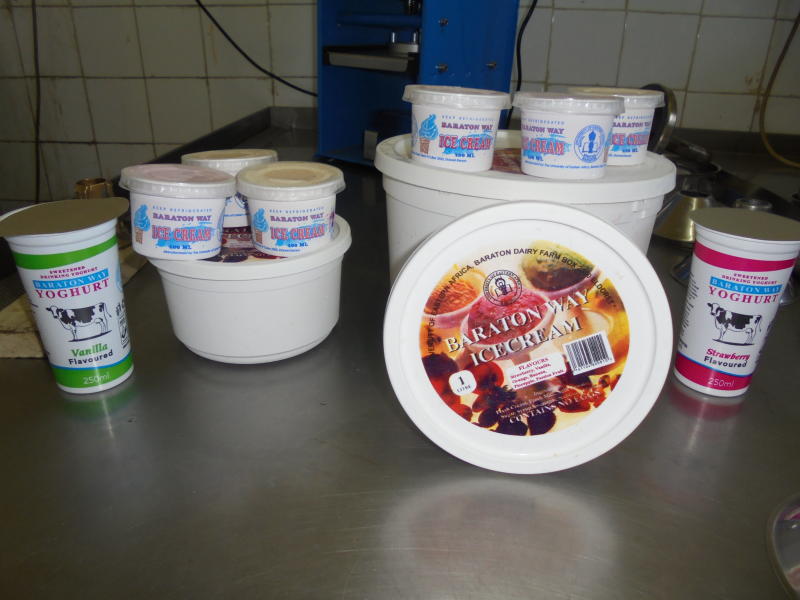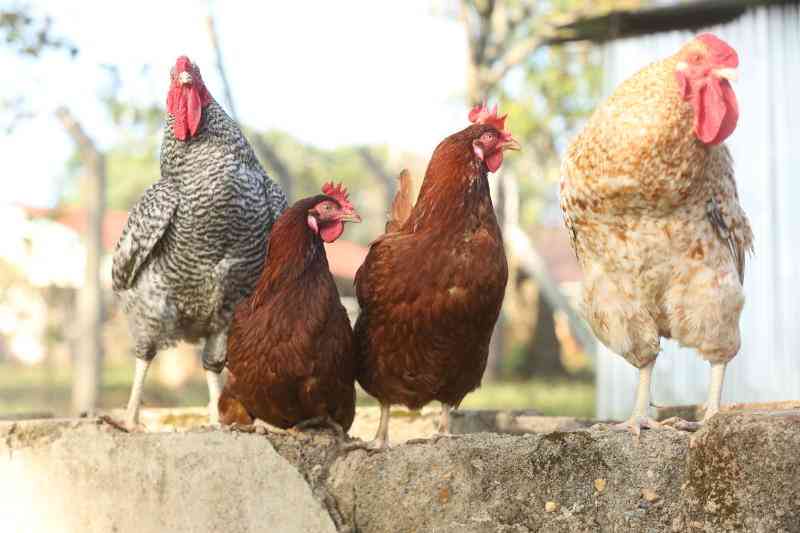
If you want to learn best practice in modern dairy farming, what better place to go than a university farm.
Smart Harvest team got a chance to visit the dairy farm run by the University of Eastern Africa, Baraton (UEAB) which has distinguished itself in production of high yielding pedigree Friesian dairy cows.
Previously, the Animal Husbandry Research station that seats on more than 300 acres belonged to the government but the late former President Daniel arap Moi donated it to the university to advance research.
The university transformed into an all-round centre of excellence in dairy and now produces high yielding pedigree Friesian dairy cows and has ventured into the lucrative milk value addition business.
“Since the transformation, now we keep hybrid dairy herd genetically developed with specific characteristics that make them produce high milk volumes by eating natural pastures and concentrates,” says Mr Paul Kirwa, director of development at university based in Nandi County.
Milking herd
So far, the institution has 155 pure breeds of Friesian cows at different stages with a milking herd of 56 that produce an average of over 1,000 liters of milk daily. The cows produce between 20 and 35 litres of milk each per day.
Previously they only kept the low yielding zebu but now they embraced the exotic high producing yields.
“We have since upgraded our breeds from Zebu livestock through the four generations – foundation, appendix, intermediate and the fourth generation of pedigree breeds. This has become a genetic and dairy production development unit of UEAB,” says Mr Kirwa.
To upgrade, Kirwa says they used sexed semen from American Breeders Services (ABS), Corporative Resource International (CRI) and CRV from Holland to achieve specific characteristics of the breeds that will depend on both open grazing in the fields and on developed feeds for high productivity.
He says the dairy breeds are not kept in zero grazing but left to graze openly in the spacious fields at the university and given concentrates to boost milk yields.
“As a cost cutting measure, we do not rely on expensive feed concentrates but allow the pedigree livestock to graze openly up to midday. They are then fed on well mixed silage with 30 per cent concentrates including cotton seed cake, wheat bran, maize jam and bran and minerals,” explains Kirwa.
Based on mobility of the herd, they ensure insemination target genetic traits of breeds whose bones are strong, well developed udder to withstand mobility in natural grazing.
He says the entire breeds have been developed at UEAB and are now registered with Kenya stud book with certificates indicating their potential production based on their genetics.
Kirwa points out that since the foundation breed is zebu, the milk fat content is high.
Mr Alfeo Ateka Nyaribo, the General Manager, Industries at UEAB says the dairy project, apart from providing skill development for agriculture students, also supplements costs at the institution with over 4,000 students whose diet is mainly vegetarian.
“We have 56 milking herd, 40 heifers, 45 females and 12 steaming breeds and 2 bulls whose gender accidentally failed in the sexed semen. We only produce females in the animal farm,” says Nyaribo.
Silage production
To manage feeds costs, the university also plants 70 acres of maize in Eldoret and another 34 acres in Baraton for silage production.
To showcase their expertise, Nyaribo says the university farm will present 10 high yielding breeds at various stages for exhibition during the Eldoret Agricultural Society of Kenya show that ends today.
The university generates income from the farm through sale of heifers and curled cows and selling yoghurt, ice cream, pasteurised milk and ghee. The UEAB branded yoghurt is sold at Sh140 per litre while the mala is Sh70 per litre.
Pasteurised milk retails at Sh50 per litre while, 100ml ice cream costs Sh50.
Students benefit from subsidised prices at the university shops.
“We never lack customers for our milk products because it is of high quality as it is produced and processed from the farm and has no stabilizers,” says Kirwa.
Calves are served at 16 months of age. They are well fed and steamed up over the last two months to calving down. They are given 1 – 2 kgs of concentrate feeds per day on top of grazing.
The animals also have ready buyers.
“A six month old heifer at Sh220,000 to buyers beyond Kenya. Our heifers are on high demand because they are quality breed,” says Kirwa.
He points out that the ageing ones are sold at Sh90,000 per head. They cull those that are more than 10 years old. Prof Phillip Maiyo, the UEAB Vice Chancellor says the university plans to expand the dairy unit to boost milk production.
“Plans are underway to expand the dairy to meet the university’s internal need and also for commercial ventures externally,” says Maiyo.
He says the institution hopes to increase current milk cooling capacity from 1,000 litres to 5,000 litres daily.
“We have plans to increase our herd and expand the capacity of our processor. In future, we will buy milk from locals for value addition,” says Prof Maiyo.
Want to get latest farming tips and videos?
Join Us
 The Standard Group Plc is a multi-media organization
with investments in media platforms spanning newspaper print operations,
television, radio broadcasting, digital and online services. The Standard Group
is recognized as a leading multi-media house in Kenya with a key influence in
matters of national and international interest.
The Standard Group Plc is a multi-media organization
with investments in media platforms spanning newspaper print operations,
television, radio broadcasting, digital and online services. The Standard Group
is recognized as a leading multi-media house in Kenya with a key influence in
matters of national and international interest.
 The Standard Group Plc is a multi-media organization
with investments in media platforms spanning newspaper print operations,
television, radio broadcasting, digital and online services. The Standard Group
is recognized as a leading multi-media house in Kenya with a key influence in
matters of national and international interest.
The Standard Group Plc is a multi-media organization
with investments in media platforms spanning newspaper print operations,
television, radio broadcasting, digital and online services. The Standard Group
is recognized as a leading multi-media house in Kenya with a key influence in
matters of national and international interest.







